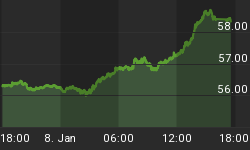In my last article, I proposed to Sell on the Fed News. But Wall Street had another agenda for June 30 - close the major indexes positive for the first half of the year. At the close on June 30, DJIA closed down 17 points for the first 6 months, DJT up 198 points, SPX up 28 points, and COMPX up 36 points. But some important sector indexes BKX, XBD, and SOX closed down for the first 6 months, and these sectors usually lead the major indexes. This is quite pathetic for a "robust recovery," especially with each cycle now making lower highs and lower lows! The previous cycle peaked on April 5, and all of the indexes except DJT and NDX stayed below their April 5th highs. These lower highs are a bearish sign that the current cycle will make lower lows below the May lows.
Then on the day after the Fed news, the sellers came in strong. This turned the cycle indicators down and left a divergence in tops. SPX, OEX, and NYA peaked on June 24. DJIA peaked on June 25. COMPX and NDX peaked on June 30, and lastly DJT peaked on July 1. This divergence has created a Dow Theory sell signal when the DJ Transports made a new high while the DJ Industrials made a lower high below its February 2004 high. But this sell signal needs to confirmed with a decline below the early June lows for both DJIA and DJT. This recent divergence is just the opposite of what happened in mid-March 2003 when a Dow Theory buy signal was created.
Since today completes the 233rd week of the Dow's bear market, this week has probably started a trend reversal downwards, being a Fibonacci week. Thus, a multi-month trend reversal is likely starting this week that will decline into the fall of 2006 - the relentlessly falling green Wave C down shown below. Since the current cycle bottoms in late July, we should know by July 30 whether the current cycle will fall below the May lows to summer 2003 levels. HUI and XAU will also likely decline to 155-160 and 70-75 in July. But then the next cycle should rally into September and peak with lower highs than the June highs, except for HUI and XAU, which should make new highs in a blow-off wave 5 up.
Another warning sign is the 4-year moving average for SPX. As seen below, its 4-year moving average has now crossed below its 8-year moving average! This crossover will be a very bearish sign for the remainder of the 4-year cycle if July closes below today's close to maintain the current crossover.



















